Collection and Utilization of Indoor Environmental Quality Information Using Affordable Image Sensing Technology
Abstract
:1. Introduction
1.1. Background
1.1.1. Current Challenges
1.1.2. Possibility of Improving a Conventional System by Using IoT Technology
1.1.3. Need for Control Standards Reflecting Indoor Environment Quality
1.2. Literature Review
1.3. Study Objectives
2. Materials and Methods
2.1. Experimental Instrumentation
2.2. Experimental Set-Up
2.3. Thermal Data Collection
2.4. Occupant Data Collection
3. Results and Discussion
3.1. Use of Thermal Environment Information
3.1.1. Operative Temperature
3.1.2. Comparison of Surface-Temperature-Based Operative Temperature and Globe-Temperature-Based Operative Temperature
3.1.3. Utilization of Indoor Thermal Comfort Data
3.2. Use of Occupant Information
3.2.1. Determining CO2 Emission Per Capita
3.2.2. Comparison of Measured and Calculated Values of CO2 Concentration Based on the Number of Occupants
3.2.3. Real-Time Ventilation Control Algorithm
3.3. Discussion and Summary
4. Conclusions
4.1. Highlights and Implications
4.2. Future Work
Author Contributions
Funding
Institutional Review Board Statement
Informed Consent Statement
Acknowledgments
Conflicts of Interest
References
- Minoli, D.; Sohraby, K.; Occhiogrosso, B. IoT considerations, requirements, and architectures for smart buildings—Energy optimization and next-generation building management systems. IEEE Internet Things J. 2017, 4, 269–283. [Google Scholar] [CrossRef]
- Jia, M.; Komeily, A.; Wang, Y.; Srinivasan, R.S. Adopting Internet of Things for the development of smart buildings: A review of enabling technologies and applications. Autom. Constr. 2019, 101, 111–126. [Google Scholar] [CrossRef]
- Farhad, M.; Hashem, A. Intelligent buildings: An overview. Energy Build. 2020, 223, 110192. [Google Scholar] [CrossRef]
- Gao, X.; Pishdad-Bozorgi, P.; Shelden, D.R.; Tang, S. Internet of Things enabled data acquisition framework for smart building applications. J. Constr. Eng. Manag. 2021, 147, 04020169. [Google Scholar] [CrossRef]
- Ahmad, M.W.; Mourshed, M.; Mundow, D.; Sisinni, M.; Rezgui, Y. Building energy metering and environmental monitoring—A state-of-the-art review and directions for future research. Energy Build. 2016, 120, 85–102. [Google Scholar] [CrossRef] [Green Version]
- Ibaseta, D.; García, A.; Álvarez, M.; Garzón, B.; Díez, F.; Coca, P.; Del Pero, C.; Molleda, J. Monitoring and control of energy consumption in buildings using WoT: A novel approach for smart retrofit. Sustain. Cities Soc. 2021, 65, 102637. [Google Scholar] [CrossRef]
- Thermal Environmental Conditions for Human Occupancy; ANSI/ASHRAE Standard 55-2010; American Society of Heating, Refrigerating and Air-Conditioning Engineers: Atlanta, GA, USA, 2010.
- Korea Energy Agency. Available online: https://www.energy.or.kr/web/kem_home_new/info/data/law.asp (accessed on 17 November 2021).
- Frontczak, M.; Wargocki, P. Literature survey on how different factors influence human comfort in indoor environments. Build. Environ. 2011, 46, 922–937. [Google Scholar] [CrossRef]
- Al Horr, Y.; Arif, M.; Katafygiotou, M.; Mazroei, A.; Kaushik, A.; Elsarrag, E. Impact of indoor environmental quality on occupant well-being and comfort: A review of the literature. Int. J. Sustain. Built Environ. 2016, 5, 1–11. [Google Scholar] [CrossRef]
- Coulby, G.; Clear, A.; Jones, O.; Godfrey, A. A Scoping Review of Technological Approaches to Environmental Monitoring. Int. J. Environ. Res. Public Health 2020, 17, 3995. [Google Scholar] [CrossRef]
- Shigaki, J.S.-I.; Yashiro, T. BIM and Automation of Building Operations in Japan: Observations on the State-of-the-Art in Research and Its Orientation. In International Conference on Computing in Civil and Building Engineering; Toledo Santos, E., Scheer, S., Eds.; Springer: Cham, Switzerland, 2021; Volume 98, pp. 879–894. [Google Scholar] [CrossRef]
- Plageras, A.P.; Psannis, K.E.; Stergiou, C.; Wang, H.; Gupta, B.B. Efficient IoT-based sensor BIG Data collection–processing and analysis in smart buildings. Future Gener. Comput. Syst. 2018, 82, 349–357. [Google Scholar] [CrossRef]
- Song, D.S.; Kim, J.W. Lot-based building system remote control technology. Mag. SAREK 2018, 47, 24–30. Available online: http://www.dbpia.co.kr/journal/articleDetail?nodeId=NODE07551863 (accessed on 17 November 2021).
- Li, W.; Logenthiran, T.; Phan, V.-T.; Woo, W.L. Implemented IoT-based self-learning home management system (SHMS) for Singapore. IEEE Internet Things J. 2018, 5, 2212–2219. [Google Scholar] [CrossRef]
- Ray, P.P. Internet of Things cloud enabled MISSENARD index measurement for indoor occupants. Measurement 2016, 92, 157–165. [Google Scholar] [CrossRef]
- Zhang, X.; Pipattanasomporn, M.; Chen, T.; Rahman, S. An IoT-based thermal model learning framework for smart buildings. IEEE Internet Things J. 2020, 7, 518–527. [Google Scholar] [CrossRef]
- Salamone, F.; Belussi, L.; Danza, L.; Ghellere, M.; Meroni, I. An open source “smart lamp” for the optimization of plant systems and thermal comfort of offices. Sensors 2016, 16, 338. [Google Scholar] [CrossRef] [Green Version]
- Zhang, W.; Hu, W.; Wen, Y. Thermal comfort modeling for smart buildings: A fine-grained deep learning approach. IEEE Internet Things J. 2019, 6, 2540–2549. [Google Scholar] [CrossRef]
- Yu, J.; Kim, M.; Bang, H.-C.; Bae, S.-H.; Kim, S.-J. IoT as a applications: Cloud-based building management systems for the Internet of Things. Multimed. Tools Appl. 2016, 75, 14583–14596. [Google Scholar] [CrossRef]
- Veselý, M.; Cieszczyk, A.; Zhao, Y.; Zeiler, W. Low Cost Infrared Array as a Thermal Comfort Sensor. In Proceedings of the CISBAT 2015 International Conference, Lausanne, Switzerland, 9–11 September 2015; Scartezzini, J.-L., Ed.; Ecole Polytechnique Fédérale de Lausanne (EPFL): Lausanne, Switzerland, 2015; Volume 1, pp. 393–398. [Google Scholar]
- Anand, P.; Singh, Y.; Selwal, A.; Singh, P.K.; Felseghi, R.A.; Raboaca, M.S. IoVT: Internet of Vulnerable Things? Threat Architecture, Attack Surfaces, and Vulnerabilities in Internet of Things and Its Applications towards Smart Grids. Energies 2020, 13, 4813. [Google Scholar] [CrossRef]
- Marques, G.; Saini, J.; Dutta, M.; Singh, P.K.; Hong, W.C. Indoor Air Quality Monitoring Systems for Enhanced Living Environments: A Review toward Sustainable Smart Cities. Sustainability 2020, 12, 4024. [Google Scholar] [CrossRef]
- Meng, Y.-B.; Li, T.-Y.; Liu, G.-H.; Xu, S.-J.; Ji, T. Real-time dynamic estimation of occupancy load and an air-conditioning predictive control method based on image information fusion. Build. Environ. 2020, 173, 106741. [Google Scholar] [CrossRef]
- Khan, S.; Rahmani, H.; Shah, S.A.A.; Bennamoun, M. A guide to convolutional neural networks for computer vision. Synth. Lect. Comput. Vcision 2018, 8, 1–207. [Google Scholar] [CrossRef]
- Cardinale, Y.; Blanco, E. Occupant activity detection in smart buildings: A review. Int. J. Wirel. Mob. Netw. 2020, 12, 81–104. [Google Scholar] [CrossRef]
- Naser, A.; Lotfi, A.; Zhong, J.; He, J. Heat-Map Based Occupancy Estimation Using Adaptive Boosting. In Proceedings of the 2020 IEEE International Conference on Fuzzy Systems (FUZZ-IEEE), Glasgow, UK, 19–24 July 2020; IEEE: Piscataway, NJ, USA, 2020; pp. 1–7. [Google Scholar] [CrossRef]
- Beltran, A.; Erickson, V.L.; Cerpa, A.E. ThermoSense: Occupancy Thermal Based Sensing for HVAC Control. In Proceedings of the 5th ACM Workshop on Embedded Systems For Energy-Efficient Buildings, Roma, Italy, 11–15 November 2013; Association for Computing Machinery (ACM): New York, NY, USA, 2013; pp. 1–8. [Google Scholar] [CrossRef]
- Steffan, J.; Fiege, L.; Cilia, M.; Buchmann, A. Towards Multi-Purpose Wireless Sensor Networks. In Proceedings of the 2005 Systems Communications (ICW’05, ICHSN’05, ICMCS’05, SENET’05), Montreal, QC, Canada, 14–17 August 2005; Dini, P., Lorenz, P., Soulhi, S., Cherkaoui, S., Mynbaev, D., Rodrigues, J.J., Hafid, A., Zepernick, H.-J., Zheng, J., Eds.; IEEE Computer Society: Los Alamitos, CA, USA, 2005; pp. 336–341. [Google Scholar] [CrossRef]
- del Cid, P.J.; Michiels, S.; Joosen, W.; Hughes, D. Middleware for Resource Sharing in Multi-Purpose Wireless Sensor Networks. In Proceedings of the 2010 IEEE International Conference on Networked Embedded Systems for Enterprise Applications, Suzhou, China, 25–26 November 2010; IEEE: Piscataway, NJ, USA, 2010; pp. 1–8. [Google Scholar] [CrossRef]
- Gubbi, J.; Buyya, R.; Marusic, S.; Palaniswami, M. Internet of Things (IoT): A vision, architectural elements, and future directions. Future Gener. Comput. Syst. 2013, 29, 1645–1660. [Google Scholar] [CrossRef] [Green Version]
- Persily, A.; de Jonge, L. Carbon dioxide generation rates for building occupants. Indoor Air 2017, 27, 868–879. [Google Scholar] [CrossRef] [PubMed]
- Patchava, V.; Kandala, H.B.; Babu, P.R. A Smart Home Automation Technique with Raspberry Pi Using IoT. In Proceedings of the 2015 International Conference on Smart Sensors and Systems (IC-SSS), Bangalore, India, 21–23 December 2015; IEEE: Piscataway, NJ, USA, 2015; pp. 1–4. [Google Scholar] [CrossRef]
- Nguyen, H.-Q.; Ton Thi, K.L.; Bui, D.M.; Huh, E.-N. Low Cost Real-Time System Monitoring Using Raspberry Pi. In Proceedings of the 2015 Seventh International Conference on Ubiquitous and Future Networks, Sapporo, Japan, 7–10 July 2015; pp. 857–859. [Google Scholar] [CrossRef]
- Gade, R.; Moeslund, T.B. Thermal cameras and applications: A survey. Mach. Vis. Appl. 2014, 25, 245–262. [Google Scholar] [CrossRef] [Green Version]
- Laussmann, D.; Helm, D. Air change measurements using tracer gases: Methods and results. Significance of air change for indoor air quality. In Chemistry, Emission Control, Radioactive Pollution and Indoor Air Quality; Mazzeo, N., Ed.; IntechOpen: London, UK, 2011; ISBN 978-953-51-5174-6. [Google Scholar] [CrossRef] [Green Version]
- Pei, G.; Rim, D.; Schiavon, S.; Vannucci, M. Effect of sensor position on the performance of CO2-based demand controlled ventilation. Energy Build. 2019, 202, 109358. [Google Scholar] [CrossRef] [Green Version]
- Raykov, Y.P.; Ozer, E.; Dasika, G.; Boukouvalas, A.; Little, M.A. Predicting Room Occupancy with a Single Passive Infrared (PIR) Sensor through Behavior Extraction. In Proceedings of the 2016 ACM International Joint Conference on Pervasive and Ubiquitous Computing, Heidelberg, Germany, 12–16 September 2016; Association for Computing Machinery (ACM): New York, NY, USA, 2016; pp. 1016–1027. [Google Scholar] [CrossRef] [Green Version]
- Bochkovskiy, A.; Wang, C.-Y.; Liao, H.-Y.M. YOLOv4: Optimal Speed and Accuracy of Object Detection. arXiv 2020, arXiv:2004.10934v1. [Google Scholar]
- Hajizadeh, R.; Farhang Dehghan, S.; Golbabaei, F.; Jafari, S.M.; Karajizadeh, M. Offering a model for estimating black globe temperature according to meteorological measurements. Meteorol. Appl. 2017, 24, 303–307. [Google Scholar] [CrossRef] [Green Version]
- Han, J.; Bae, J.; Jang, J.; Baek, J.; Leigh, S.-B. The derivation of cooling set-point temperature in an HVAC system, considering mean radiant temperature. Sustainability 2019, 11, 5417. [Google Scholar] [CrossRef] [Green Version]
- Derby, M.M.; Hamehkasi, M.; Eckels, S.; Hwang, G.M.; Jones, B.; Maghirang, R.; Shulan, D. Update of the scientific evidence for specifying lower limit relative humidity levels for comfort, health, and indoor environmental quality in occupied spaces (RP-1630). Sci. Technol. Built Environ. 2016, 23, 30–45. [Google Scholar] [CrossRef]
- Grün, G.; Trimmel, M.; Holm, A. Low humidity in the aircraft cabin environment and its impact on well-being—Results from a laboratory study. Build. Environ. 2012, 47, 23–31. [Google Scholar] [CrossRef]
- Tran, D.T.; Alleman, L.Y.; Coddeville, P.; Galloo, J.C. Indoor particle dynamics in schools: Determination of air exchange rate, size-resolved particle deposition rate and penetration factor in real-life conditions. Indoor Built Environ. 2017, 26, 1335–1350. [Google Scholar] [CrossRef]



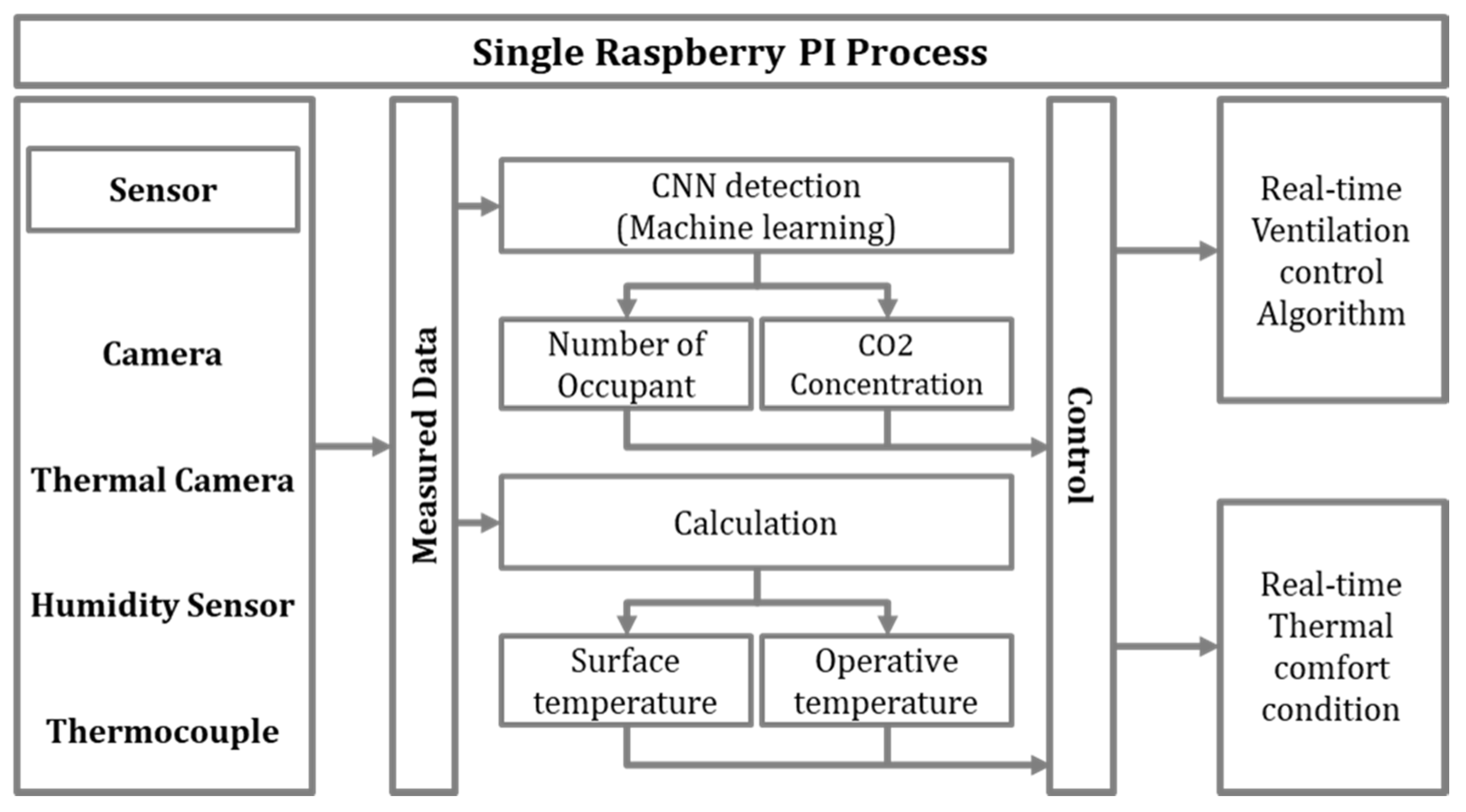





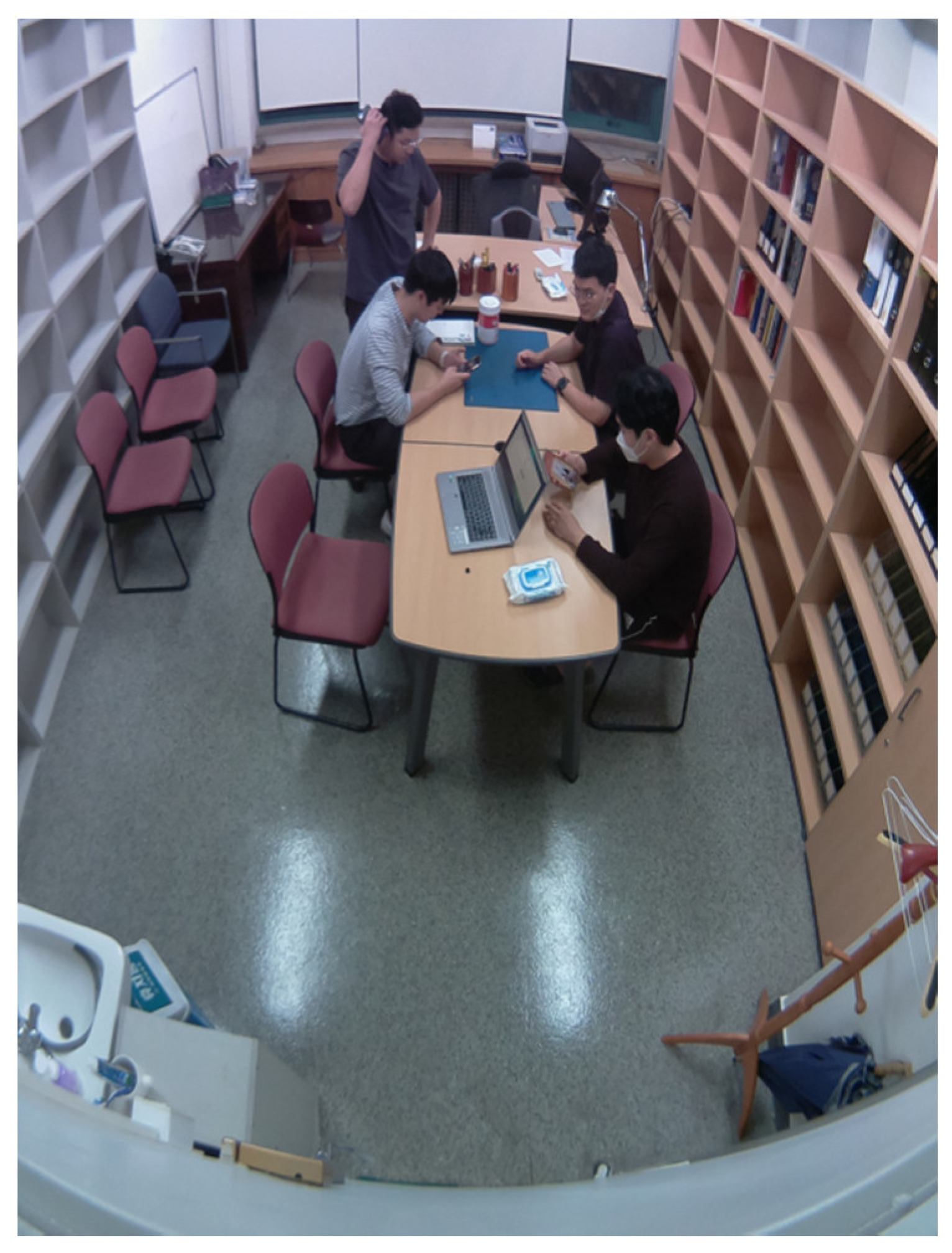


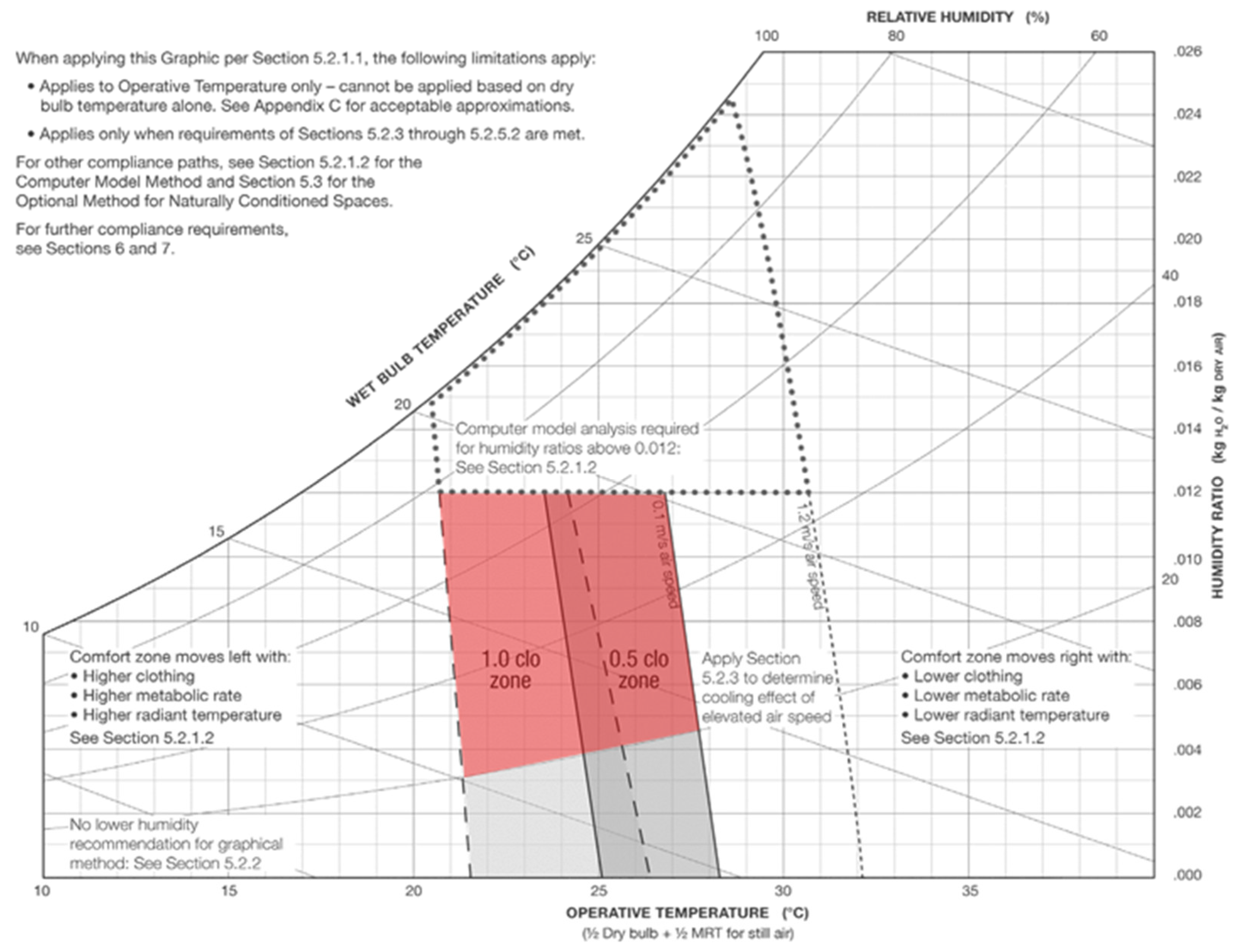



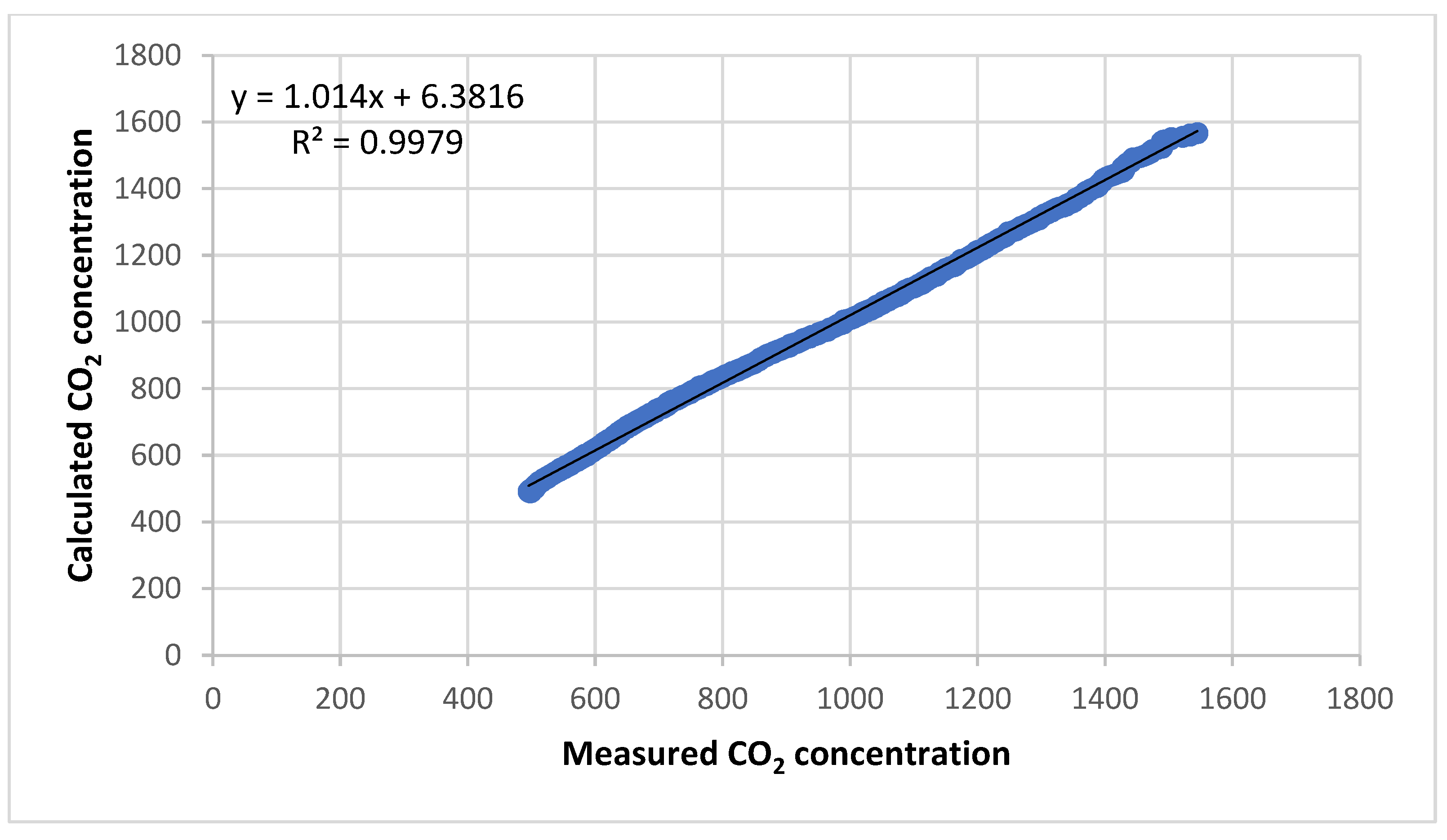
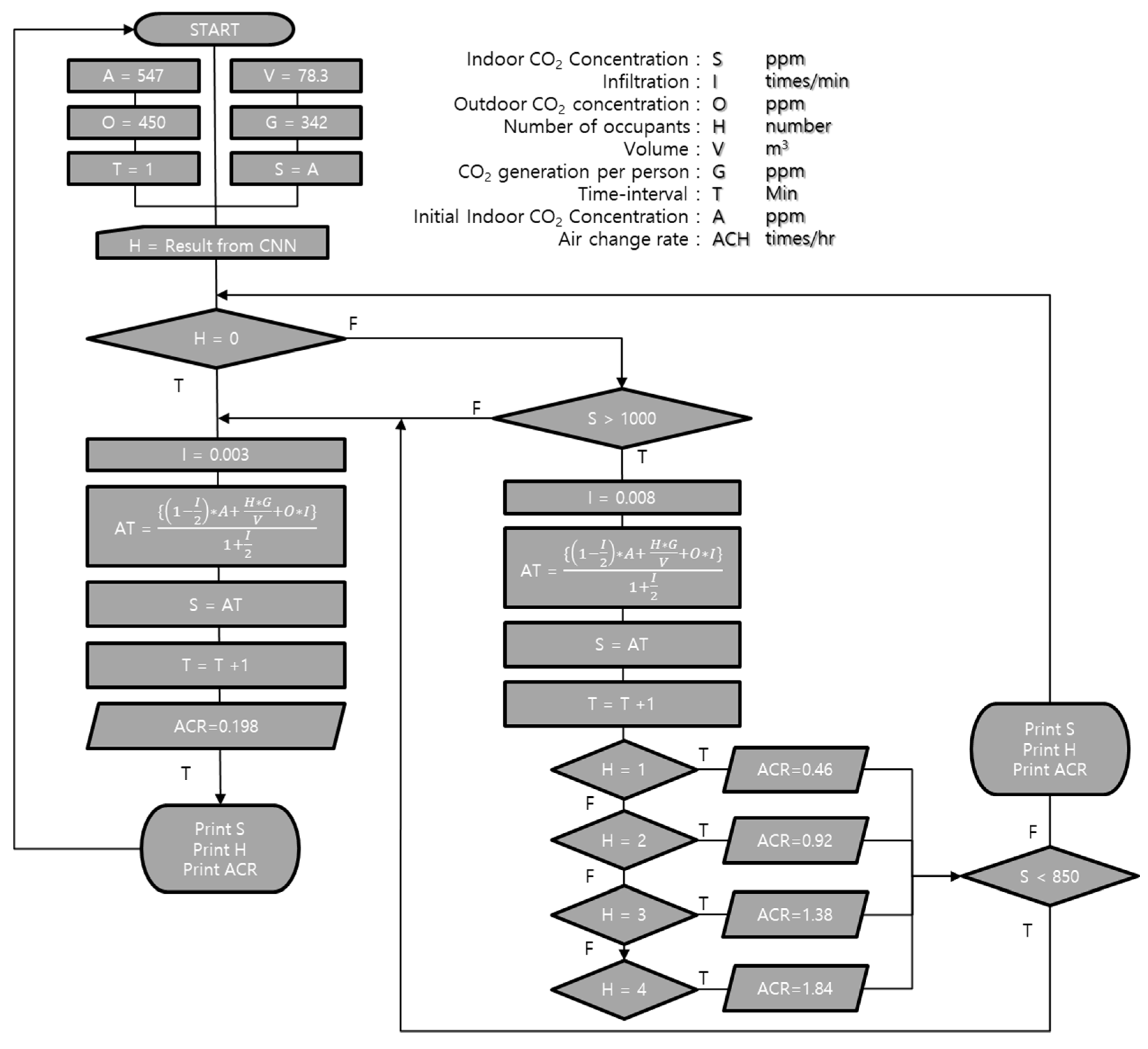

| Thermal Comfort | Indoor Air Quality (IAQ) | Visual Comfort | Acoustic Comfort |
|---|---|---|---|
| Air velocity Humidity Air/surface temperature Clothing Insulation Activity level | Carbon monoxide Carbon dioxide Ozone Nitrogen oxides Mold and bacteria Smoke Volatile organic compounds | Visual ergonomics Glare Natural light Artificial lighting Privacy Building design | Sound insulation Noise levels Privacy |
| Characteristic | Pi Camera | MLX90640 | DHT22 | RPTF-2 | TR-76Ui |
|---|---|---|---|---|---|
| Appearance |  |  |  |  |  |
| Data type | Real image | Surface temperature Thermal image | Air temperature/ humidity | Globe temperature | CO2 concentration |
| Performance | 8 megapixels 160° angle | 768 pixels (32 × 24) 110° × 75° −40–300 °C (±1) 7 m distance | −40–80 °C (±0.5) RH: 0% to 100% (±2) | −5–60 °C (±1.5) | 0–9000 ppm (±50 ppm +5%) |
| Parameter | Specification |
|---|---|
| Location | Seoul |
| Type | Office |
| Floor | 4th Floor |
| Direction | East |
| Room height | 3.4 m |
| Area | 23 m2 |
| Description | Equation |
|---|---|
| Operating temperature, OT |
| Description | Equation |
|---|---|
| Absolute humidity, e (water vapor in kg/dry air in kg) |
| Experiment Scenario | ||
|---|---|---|
| Parameter | Value | Notes |
| Location | Office | Volume: 78.3 m3 Average of CO2 generation per person: 0.0048 L/s |
| Sex | Male | |
| Age | 30–39 | |
| MET | 1.5 | Sitting tasks Light effort |
| Occupants | 1–4 | |
| Result | ||
| CO2 generation per person: 0.0057 L/s | ||
| Category | Parameter | Initial Value | Air Change Rate (ACR) |
|---|---|---|---|
| Base Values | Outdoor CO2 concentration | 450 ppm | 1 person: 0.46 times/h (36 m3) |
| Volume | 78.3 m3 | ||
| CO2 emission per person | 0.0057 L/s (342 ppm) | 2 persons: 0.92 times/h (72 m3) | |
| CO2 limit standard | 1000 ppm | ||
| Number of occupants | Real-time result | 3 persons: 1.38 times/h (108 m3) | |
| Measured Values | Initial CO2 concentration | 547 ppm | 4 persons: 1.84 times/h (144 m3) |
| Infiltration rate | 0.198 times/h |
| Description | Equation |
|---|---|
| Mass balance equation |
| IoT device | Sensor | Data Processing | ||||||||||||
| Raw Data | Step 1 | Result | Step 2 | Result | Step 3 | Result | Step 4 | Result | ||||||
| Cal | Algo | Cal | Algo | Cal | Algo | Cal | Algo | |||||||
| IR array sensor | Surface temperature | ● | Surface classification | ● | Average of surface temperatures | ● | Operative temperature | ● | Thermal comfort | |||||
| ● | Heating/Cooling set-point | |||||||||||||
| Window surface temperature | Solar radiation | |||||||||||||
| ● | Cold draft | |||||||||||||
| ● | Floor surface temperature | ● | Floor heating condition | |||||||||||
| ● | Heating unit classification | ● | Occupant detection | ● | Occupant pattern | ● | ● | Metabolic rate | ||||||
| ● | CO2 | ● | Ventilation algorithm | |||||||||||
| ● | Air change ratio (by infiltration) | |||||||||||||
| ● | Air change set-point | |||||||||||||
| ● | Heat loss (by air change) | |||||||||||||
| ● | IAQ set-point | |||||||||||||
| ● | Target surface temperature | ● | Fire alarm | |||||||||||
| ● | Body temperature | ● | Interior heat gain | |||||||||||
| ● | Device temperature | |||||||||||||
| ● | Visualization | ● | Occupant detection | ● | Night detection | |||||||||
| ● | Heat bridge | ● | Crack and infiltration | |||||||||||
| Camera | Image | ● | Movement detection | ● | Trespass monitoring | |||||||||
| ● | Occupant detection | ● | Number of occupants | ● | CO2 | ● | Ventilation algorithm | |||||||
| ● | Air change ratio (by infiltration) | |||||||||||||
| ● | Air change set-point | |||||||||||||
| ● | Heat loss (by air change) | |||||||||||||
| ● | IAQ set-point | |||||||||||||
| ● | Occupant density | |||||||||||||
| ● | Metabolic rate | ● | Body heat gain | |||||||||||
| ● | Brightness | ● | Light control | |||||||||||
| ● | Blind control | |||||||||||||
| ● | Fire alarm | |||||||||||||
Publisher’s Note: MDPI stays neutral with regard to jurisdictional claims in published maps and institutional affiliations. |
© 2022 by the authors. Licensee MDPI, Basel, Switzerland. This article is an open access article distributed under the terms and conditions of the Creative Commons Attribution (CC BY) license (https://creativecommons.org/licenses/by/4.0/).
Share and Cite
Lee, J.; Woo, D.-O.; Jang, J.; Junghans, L.; Leigh, S.-B. Collection and Utilization of Indoor Environmental Quality Information Using Affordable Image Sensing Technology. Energies 2022, 15, 921. https://doi.org/10.3390/en15030921
Lee J, Woo D-O, Jang J, Junghans L, Leigh S-B. Collection and Utilization of Indoor Environmental Quality Information Using Affordable Image Sensing Technology. Energies. 2022; 15(3):921. https://doi.org/10.3390/en15030921
Chicago/Turabian StyleLee, Joosang, Deok-Oh Woo, Jihoon Jang, Lars Junghans, and Seung-Bok Leigh. 2022. "Collection and Utilization of Indoor Environmental Quality Information Using Affordable Image Sensing Technology" Energies 15, no. 3: 921. https://doi.org/10.3390/en15030921
APA StyleLee, J., Woo, D.-O., Jang, J., Junghans, L., & Leigh, S.-B. (2022). Collection and Utilization of Indoor Environmental Quality Information Using Affordable Image Sensing Technology. Energies, 15(3), 921. https://doi.org/10.3390/en15030921






